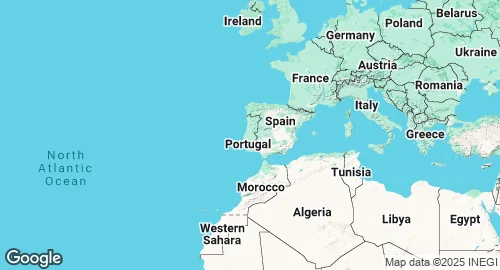Portugal Military Forces 🇵🇹
Military Strength Overview
| 🛩️ Air Force | 79 active aircraft |
| ⚓️ Naval forces |
36 ships in fleet
– incl. 2 submarines |
| 🪖 Active Troops | 27,250 personnels |
| ⛑️ Reserve Troops | 211,700 personnels |
| 👮♀️ Paramilitary | 24,700 personnels |
| 🎖️ Military ranks | 76 ranks listed |
Defense Statistics & Key Metrics
| Population | 10.6 million (2023) |
| GDP | $289.1 billion (2023) |
| GDP per capita | $27331 (2023) |
| Military Budget | $4.6 billion (2024) |
| Share of GDP in Milex | 1.5% (2024) |
| Share of Govt Expenditures | 3.6% (2024) |
| Military spends per capita | $445 (2024) |
| Inflation Rate | 2.42% (2024) |
| Military Personnel | 52,000 (2020) |
Strategic Overview in 2025
As a founding member of NATO and a member of the European Union, Portugal's defense posture is anchored in collective security frameworks. Its strategic focus is therefore twofold: contributing to the Alliance's collective defense and participating in EU-led missions. Geographically, its location on the Iberian Peninsula gives it control over key Atlantic sea lanes, a historically significant role that continues to define its maritime strategy. While not facing direct territorial threats, Portugal's security is intrinsically linked to European stability, leading it to prioritize expeditionary capabilities and interoperability with allied forces. The nation aims to act as a credible contributor to international security, leveraging its military as a tool of statecraft.
Military Forces and Capabilities
The Portuguese Armed Forces consist of an Army, Navy, and Air Force, with a combined active-duty strength of approximately 27,000 personnel. The military is a professional force, having ended conscription, and is supplemented by a larger reserve component.
-
Army: The land component is structured around mechanized and light infantry brigades designed for rapid response. A major modernization program, backed by a €1.236 billion investment through 2034, is underway to enhance mobility, command and control, and firepower. Key acquisitions include CAESAR MkII self-propelled howitzers and a significant mid-life upgrade for its Pandur II 8x8 vehicle fleet.
-
Air Force: Air power centers on a fleet of F-16AM/BM Fighting Falcon jets for air defense and ground attack roles. Its airlift capacity is provided by C-130H and C-295M aircraft, soon to be augmented by the Embraer KC-390, enhancing its transport and mission support capabilities. Maritime patrol is a critical function, performed by P-3C Orion aircraft.
-
Navy: The Navy is tailored for maritime surveillance, anti-submarine warfare, and protecting sea lines of communication in the Atlantic.
Defense Industry and Modernization
Portugal's defense industry has shifted from a closed, state-focused model to a dynamic network of industries emphasizing dual-use technologies and collaborative European projects. This strategy aims to enhance strategic autonomy and support the armed forces' modernization. The Military Programming Law for 2023-2034 is the central pillar of this effort, committing significant funds to address capability gaps and improve alignment with NATO standards. This long-term plan focuses on creating a more technologically advanced, modular, and expeditionary-capable force, prepared for high-intensity missions and international deployments.
Portuguese Military Budget History
Population and Military Personnel Trends
GDP and Inflation Rate Trends
Portuguese Naval Shipbuilding
| Class | Type |
|---|---|
| Viana do Castelo | Offshore patrol vessel |
Military Expenditure: SIPRI Milex.
